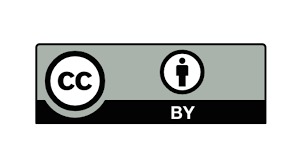Conceptions of Basic Education students on perimeter and area
Concepciones de estudiantes de Educación Básica sobre perímetro y área
Main Article Content
This article presents the preliminary results of an exploratory study on the conceptions that the sixth grade students of Basic Education have about the notions of perimeter and area. The research is framed in the qualitative naturalistic approach. The data of the diagnostic test are interpreted in the light of the conceptual and theoretical elements, the representations given by the informants when they solve problems and argue situations involving the concepts of perimeter and area. The key informants are ten students of the sixth grade of Basic Education of the Gran Mariscal School of Ayacucho de Sucre (Santander). The analysis of the information consisted in determining the main categories emerging from the study. Among the results obtained, it is highlighted that a large part of the students demonstrate clear notions of contour and surface, but not so much on perimeter and area. It is also perceived that students confuse area with perimeter and do not associate units of measurement of concepts.
Downloads
Publication Facts
Reviewer profiles N/A
Author statements
Indexed in
- Academic society
- Universidad Francisco de Paula Santander
- Publisher
- Universidad Francisco de Paula Santander
Article Details
Aldana, E., y López, J. (2016). Matemáticas para la diversidad: un estudio histórico, epistemológico, didáctico y cognitivo sobre perímetro y área. Ridi, 7(1), 77-92.Disponible en http://revistas.uptc.edu.co/revistas/index.php/investigacion_duitama/article/view/5602/4845
Arenas, M. (2012). Propuesta didáctica para la enseñanza de áreas y perímetros en figuras planas (Trabajo final de maestría). Medellín: Universidad Nacional de Colombia. Disponible en: http://www.bdigital.unal.edu.co/9300/1/5654114.2012.pdf
Caballero, S. (2005). Un estudio transversal y longitudinal sobre los conocimientos informales de las operaciones aritméticas básicas en niños de Educación Infantil. (Tesis doctoral). Madrid: Universidad Complutense de Madrid. Disponible en: http://eprints.ucm.es/7283/1/T28929.pdf
Cardoso, E. y Cerecedo, M. (2008). El desarrollo de las competencias matemáticas en la primera infancia en México. Revista Iberoamericana de Educación, 47(5), 5-25.
Fandiño, M., y D´Amore, B. (2009). Área y perímetro: aspectos conceptuales y didácticos. Bogotá: Magisterio.
Fandiño, M., y D´Amore, B. (2007). Relaciones entre área y perímetro: convicciones de maestros y de estudiantes. Relime, 10(1),39-68. Disponible en http://www.scielo.org.mx/pdf/relime/v10n1/v10n1a3.pdf
Fiorentini, D., y Lorenzato, S. (2010). Investigación en educación matemática. Campinas: Autores Associados.
Garrido, E. (2015). La enseñanza del concepto de área y perímetro de polígonos a través del Geoplano para el desarrollo de la competencia matemática en resolución de problemas del grado séptimo en el Colegio María Antonia Cerini (Trabajo final de maestría). Medellín: Universidad Nacional de Colombia. Disponible en http://bdigital.unal.edu.co/51217/1/82140394.2016.pdf
González, J. (2014). Comprensión de los conceptos de perímetro y área y la independencia de sus medidas, en el contexto de la agricultura del café (Trabajo final de maestría). Medellín: Universidad de Antioquia. Disponible en http://bibliotecadigital.udea.edu.co/bitstream/10495/6518/1/JuanGonzalez_2014_perimetroarea.pdf
Roldan, G. y Rendón, H. (2014). Estrategia para el estudio del área y el perímetro de figuras planas articulada al modelo sociocrítico para los estudiantes de la institución educativa María de los Ángeles Cano Márquez (Trabajo final de maestría). Medellín: Universidad de Medellín.








